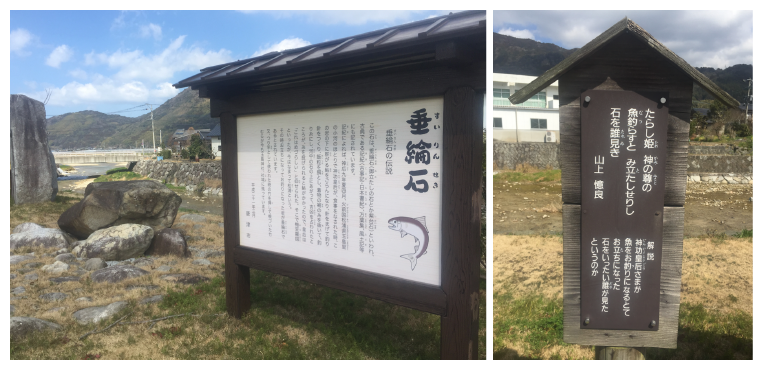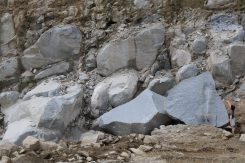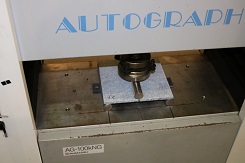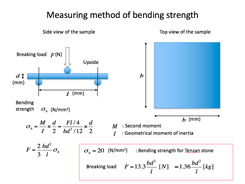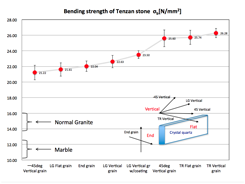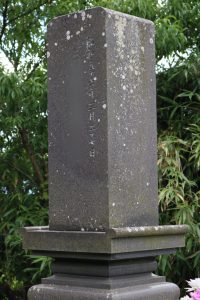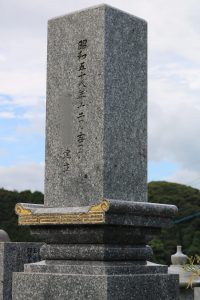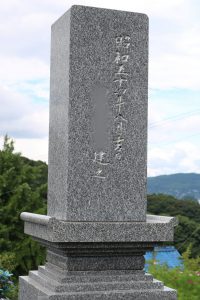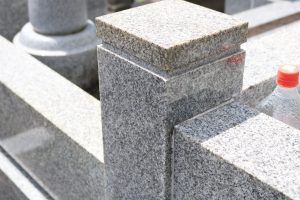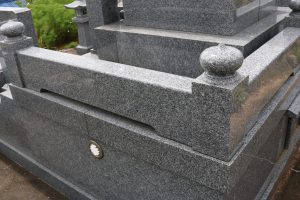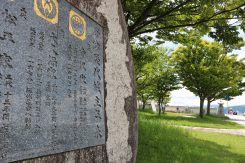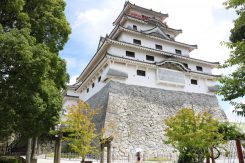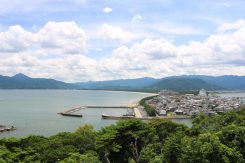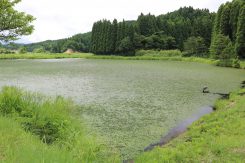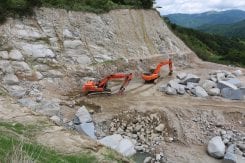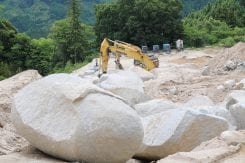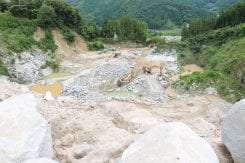Properties of Tenzan Stone
Tenzan Stone Data(Evaluation tests at JTCCM)
Specific gravity:2.68 g/㎤
Water absorption: 0.059%(Average)
Compression strength:192.50 N/㎟
Mohs hardness:6.5
◆ Water absorption(%) … Percentage of increase weight due to the penetration of liquid water into the dry stone. Stone with a small number is preferred for less degradation, and maintaining color and shine.
◆ Compression strength(N/㎟) … Maximum load that can be applied to stone before the stone is crushed. An index of stone hardness.
Comparison with other stones
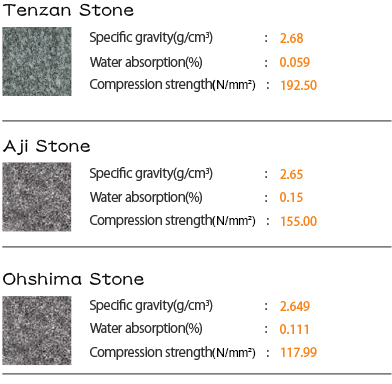
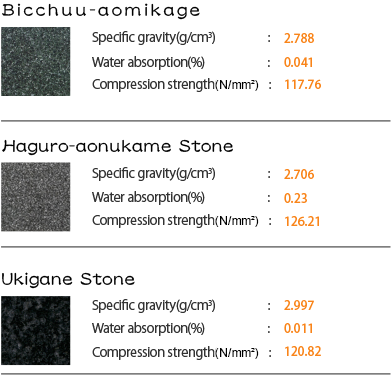
Bending strength of Tenzan stone
We evaluated the bending strength for Tenzan Stone at the Industrial Technology Center of Nagasaki in compliance with JIS A 5411. We have measured the bending strength for characteristic angles of quartz crystal grain whose definition is shown in the figure. The bending strength is highest for transverse direction to the vertical side of the the grain, while is smallest for -45 degree direction to the vertical side of the grain. We found that the bending strength of "plain" Tenzan Stone is more than 20 [N/mm2] even for the weakest direction during the experiments. We also found that the bending strength for the weak angle becomes stronger and has less variation with coating epoxy resin sealer on the back side.
Comparison of aged deterioration with other tombstones
Mineralogical classification
Tenzan Stone is made of granodiorite which is classified as the material between granite and diorite.

Granite mainly contains quarts, plagioclase and biotite, whose color changes depended on the composition of a plagioclase feldspar denoted by its overall fraction of anorthite or albite. If potash feldspar decreases and sodium‐calcium feldspar increases, then the stone becomes dark and changes to diorite.
Tenzan Stone belongs to granodiorite containing a lot of bluish plagioclase rather than potassium feldspar, and is very hard and is also shining transparent like a blue ocean.
Classification of plutonic rock
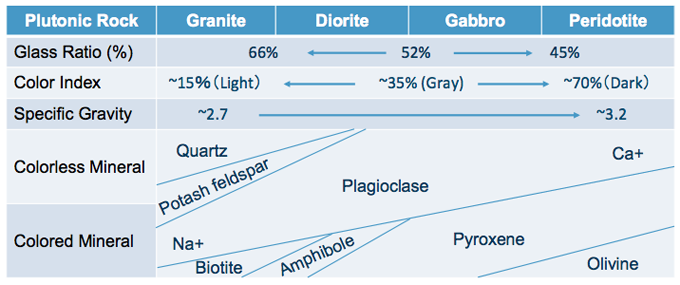
Color of Tenzan Stone
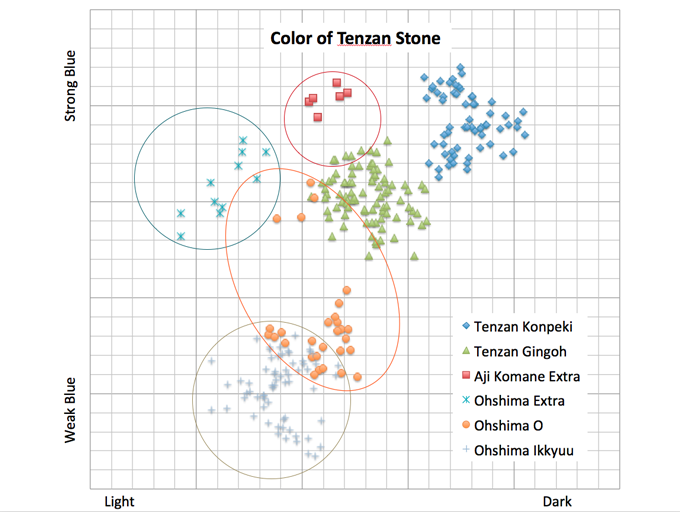
Story of Granite and "Mikage" stone
Granites are rocks that make up the crust and are distributed throughout the Earth. Continental granite has many Potash feldspar from pink to pale pink and white rocks are few, while Japanese granite has many plagioclase and white rocks are frequent. Since a lot of granites are produced around "Mikage" town in Kobe city, the granite is also called "Mikage" stone in Japan. However, the granite around here has a lot of Potassium feldspar and has a pale pink color.
Tenzan Stone Homeland
The Tenzan Stone production site is located upstream of the Tamashima river in the Nanayama area of Karatsu city. As the description in "Manyohshu" (Collection of Ten Thousand Leaves) and "Kojiki" (Records of Ancient Matters) , Empress Jingu visited this area and fished at Tamashima river sitting on the rock (Suirin-seki 垂綸石) about 2000 years ago. Suirin-seki is made of the same granodiorite as Tenzan Stone. Yamanoue-no-okura 山上憶良 wrote "Waka", an old style of Japanese poem, about the episode of this stone and Empress Jingu in the "Manyohshu" about 1300 years ago.
